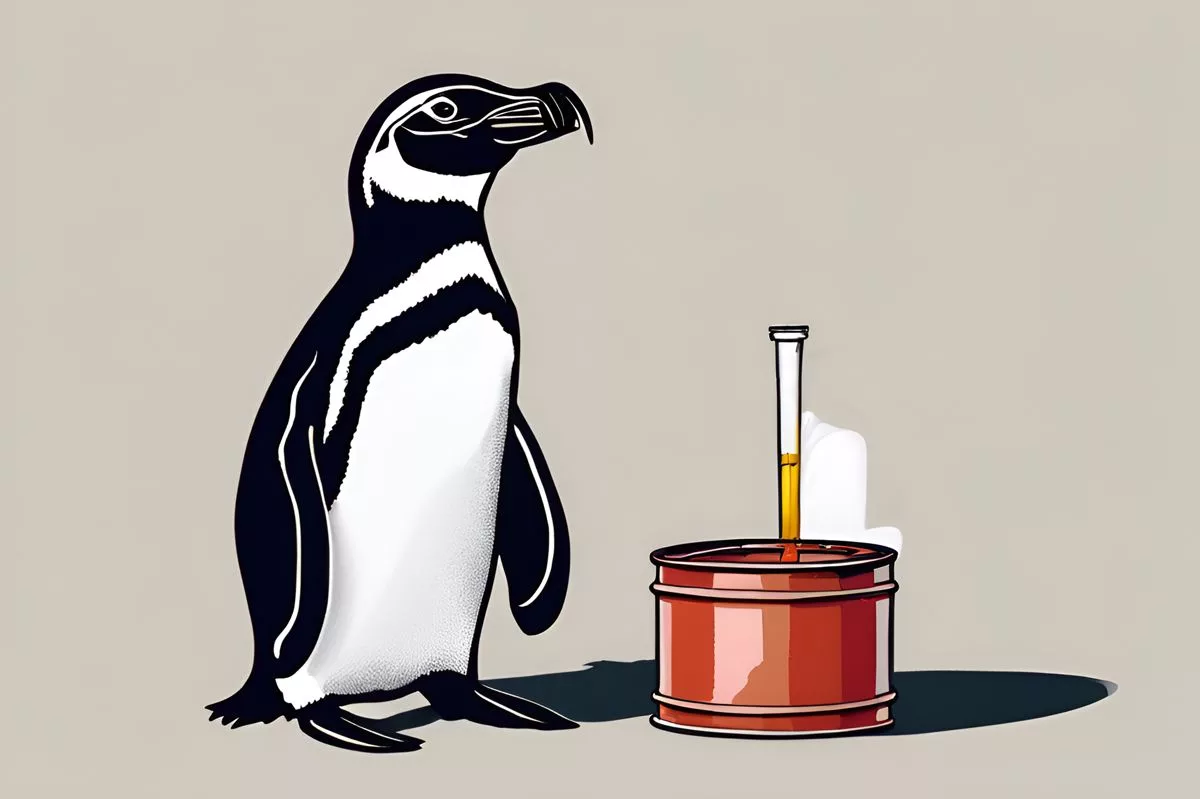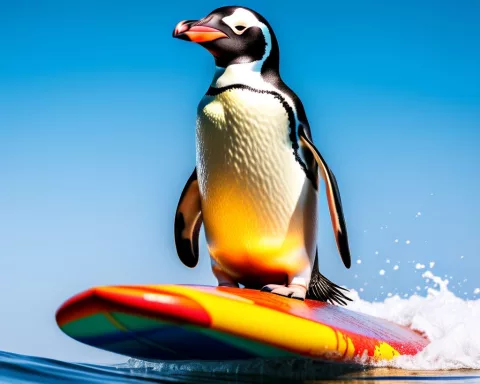The African Penguin population has declined by more than half in the last decade, with only about 31,700 individuals left across their entire habitat. In 2000, an ecological disaster caused by the sinking of a fully loaded MV Treasure ore-carrier led to over 40% of the global population of African Penguins being drenched in deadly heavy fuel oil. A paper published in Ostrich: Journal of African Ornithology suggests that the African Penguin meets the criteria to be classified as ‘critically endangered’, and the IUCN will make a final decision on its status on October 22.
A Disturbing Reality: Declining Penguin Population
There are only about 31,700 individual African Penguins left across their entire habitat that spans from Namibia to the Eastern Cape, and the population has more than halved in the last decade. In a paper titled “The African Penguin Spheniscus demersus should be considered Critically Endangered”, published in the scientific journal Ostrich: Journal of African Ornithology, Dr. Richard Sherley and his team suggested that the African Penguin likely met the criteria outlined in the IUCN Red List methodology to be classified as ‘critically endangered’. The IUCN will publish a final decision on October 22.
In the frosty core of mid-winter, on June 23, 2000, Cape Town witnessed one of the world’s most devastating ecological disasters affecting coastal seabirds. The event was precipitated by the sinking of the fully loaded MV Treasure ore-carrier which was approximately 8km north of Robben Island during an attempted rescue tow. The crippled ship leaked more than 1,100 tons of deadly heavy fuel oil into the ocean, drenching tens of thousands of African Penguins from the nearby breeding colonies at Robben Island and Dassen Island. These colonies represented over 40% of the global population of these penguins.
In the immediate aftermath, within ten days of the oil spill, over 20,000 severely oil-soaked penguins and other seabirds were relocated to a temporary rehabilitation center at Salt River. A multinational team devoted their efforts to cleaning and restoring the affected birds. A remarkable rescue operation led to about 38,500 individual penguins being cleaned and released after oiling, or captured and relocated hundreds of kilometers away to prevent them from getting oiled.
A Disturbing Reality: Declining Penguin Population
Fast-forwarding 24 years, a brief moment in the scale of evolution, the harsh truth is that there are today only about 31,700 individual African Penguins left across their entire habitat that spans from Namibia to the Eastern Cape. This means that fewer penguins exist in the total population than were saved from oiling during the singular MV Treasure catastrophe.
This startling decline in the penguin population is validated in a paper titled “The African Penguin Spheniscus demersus should be considered Critically Endangered”, published online on July 10 in the scientific journal Ostrich: Journal of African Ornithology. The main author is Dr. Richard Sherley from the Environment and Sustainability Institute/Centre for Ecology and Conservation at the University of Exeter in Cornwall, UK. His co-authors, numbering 11, include eminent local scientists, managers, and conservationists in the field of African Penguin research.
Sherley and his team consolidated data on penguin breeding pairs from surveys conducted at 26 colonies in three regions in South Africa and Namibia from 1979 until 2023. They examined the counts of these breeding pairs to determine the rate of decline and the species’ conservation status, in accordance with the IUCN (International Union for Conservation of Nature) Red List methodology. Their computations suggested that the African Penguin likely met the criteria outlined in the relevant IUCN methodology statements to be classified as ‘critically endangered’.
The Legal Perspective and the IUCN’s Decision
Nina Braude, a senior attorney at the Biodiversity Law Centre, stated that the work of Sherley and colleagues served two purposes. Firstly, it was published as a scientific paper to contribute to broader scientific debates and knowledge development. Secondly, it is part of the scientific submission arguing that the threat status of African Penguins should be escalated from ‘Endangered’ to ‘Critically Endangered’ on the IUCN’s Red List of Threatened Species.
BirdLife International, which has been designated as the ‘Red List Authorities’ by the IUCN for birds, is tasked with assessing the size and trend of bird populations and consultation through the organization’s Globally Threatened Birds Forums. Utilizing the Ostrich paper as its scientific foundation and further consultation, BirdLife International recommended the change in the listing of these penguins to the IUCN. The IUCN has indicated that, upon reviewing this assessment within its own structures, it will publish a final decision on October 22.
Sherley and his colleagues emphasize in their paper that although the total population size at the beginning of the 20th century is unknown, the African Penguin may have been the area’s most populous seabird, with 1.5 to 3 million individuals across its range. “By 1956, only around 300,000 individuals remained, and the population has declined consistently since then, apart from a brief recovery in the late 1990s and early 2000s.”
Their paper notes four essential findings: the global rate of decline has almost doubled over the past ten years, the annual rate of decline was 9.9% in the Namibian portion of the penguins’ range and 12.9% in the Eastern Cape section, this is the first time that the global breeding population of African Penguins has dipped below 10,000 pairs, and the global population has more than halved in the last decade. Therefore, it is not an overstatement to express concern that — if these rates of decline persist — the species could become extinct in the wild by 2035.
What is the current population of African Penguins and how has it changed in the last decade?
There are only about 31,700 individual African Penguins left across their entire habitat, and the population has more than halved in the last decade.
What caused the decline in the African Penguin population?
In 2000, an ecological disaster caused by the sinking of a fully loaded MV Treasure ore-carrier led to over 40% of the global population of African Penguins being drenched in deadly heavy fuel oil. However, the decline in the population has been consistent since the 1950s, apart from a brief recovery in the late 1990s and early 2000s.
What is the IUCN Red List of Threatened Species, and how is the African Penguin currently classified on it?
The IUCN Red List of Threatened Species is a comprehensive database of the conservation status of plants, animals, and fungi, with categories ranging from “least concern” to “extinct.” The African Penguin is currently listed as “endangered,” but there is a proposal to reclassify it as “critically endangered.”
What is the IUCN’s decision on the African Penguin’s status, and when will it be published?
The IUCN will make a final decision on the African Penguin’s status on October 22. BirdLife International has recommended that the penguin’s listing be changed from “endangered” to “critically endangered” based on the findings of a paper published in Ostrich: Journal of African Ornithology.
What are the consequences of the African Penguin’s declining population, according to the scientific paper?
The paper suggests that the African Penguin could become extinct in the wild by 2035 if the current rates of decline persist.
How did people respond to the 2000 ecological disaster that affected African Penguins?
A multinational team devoted their efforts to cleaning and restoring the affected birds. A remarkable rescue operation led to about 38,500 individual penguins being cleaned and released after oiling, or captured and relocated hundreds of kilometers away to prevent them from getting oiled.












